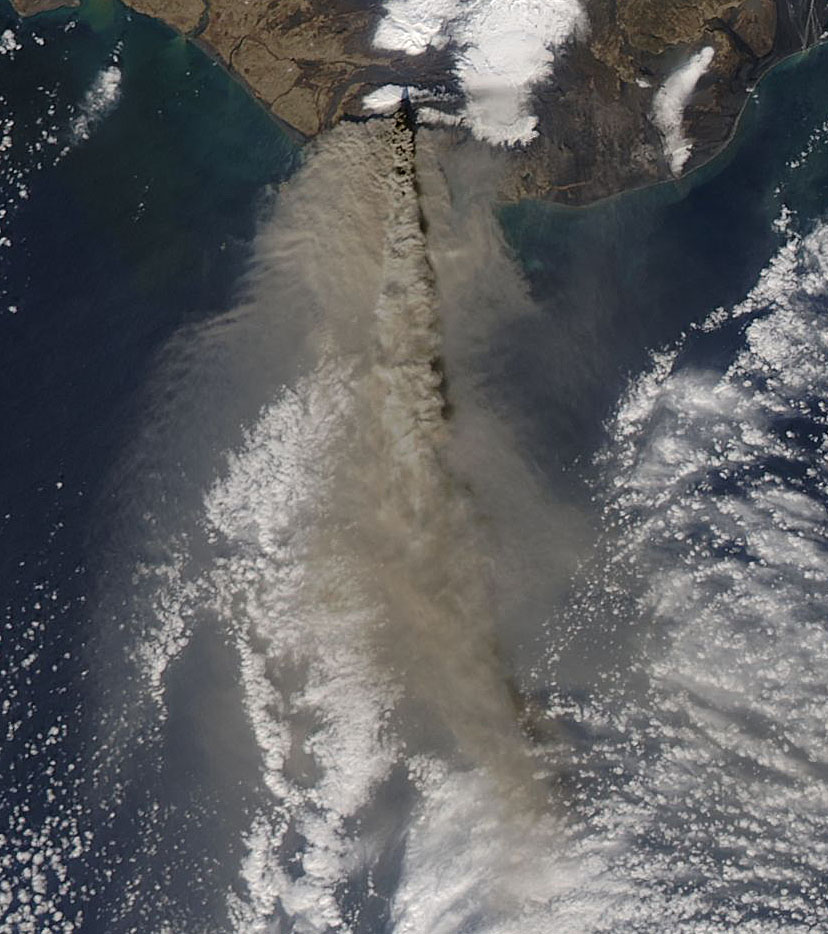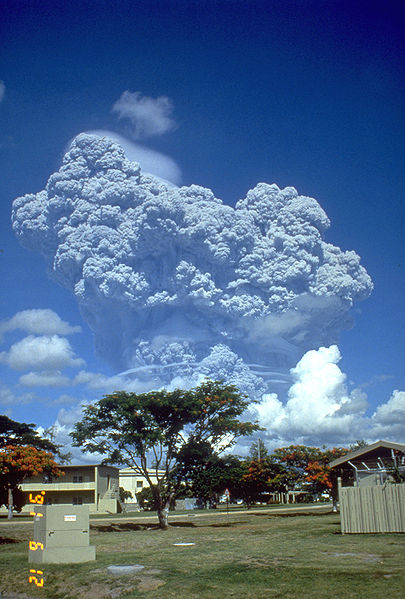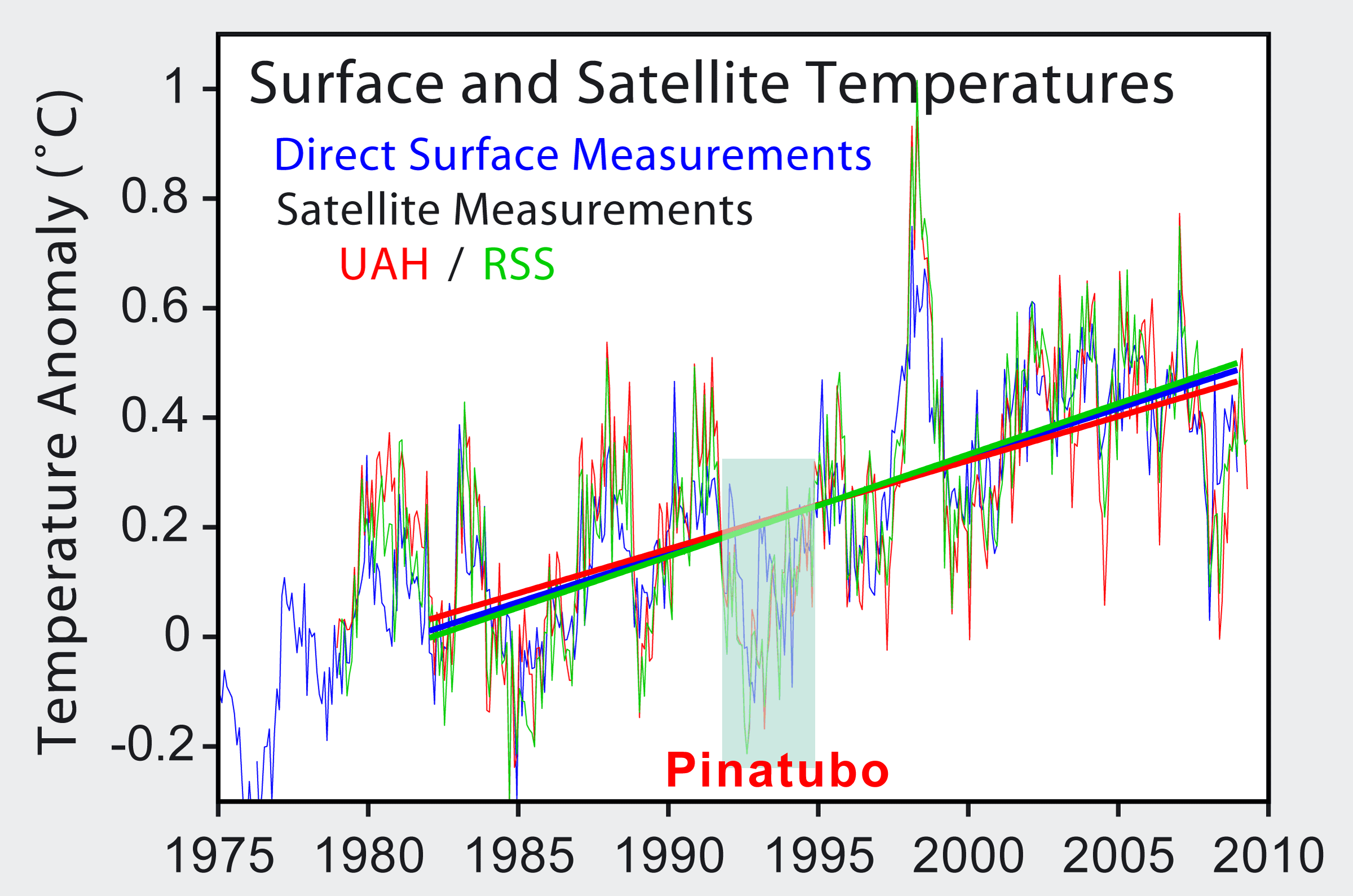Ticker for April 22, 2010
MESONET TICKER ... MESONET TICKER ... MESONET TICKER ... MESONET TICKER ...
April 22, 2010 April 22, 2010 April 22, 2010 April 22, 2010
Thar's Green On Them Thar Roofs, and Volcanoes vs. Climate
Some folks like to walk a gilded path, but a group of University of Oklahoma
faculty have decided a green one might be of great benefit to the those of us
working at the National Weather Center. Professors from Architecture, Landscape
Architecture, and Meteorology have led an effort to install an experimental
vegetative roof (or green roof) system atop part of the NWC. Green roof systems
have been used in other parts of the U.S. and the world as an effort to reduce
utility costs and storm runoff over that of a simple bare roof. As an owner of
a simple bare roof thanks to genetics, I can certainly understand the need for
hats on our buildings.
You can read more about the green roof at the NWC with this bit of info from the
College of Atmospheric and Geographic Sciences:
http://www.nwc.ou.edu/pdf/1Green_Roof_MA_100413.pdf
#####################
Will the Iceland volcano affect Oklahoma?
Luckily, it looks as if the eruption of the Eyeje ... Eyaja ... Eyfa ... that
volcano in Iceland (pronounced "that volcano in Iceland") will not have an
effect on Oklahoma, nor on the United States. The volcano, which erupted
earlier this month near the Eyjafjallajoekull (cut and paste!) glacier, has
spread ash throughout Europe, disrupting air travel and affecting the health
and safety of those close to its eruption. You can see the ash cloud from space
in this NASA satellite image:

While some volcanoes can erupt violently enough to spread ash around the world
by spewing the particles into the stratosphere, the Iceland volcano does not
appear to be erupting strongly enough to do that at this time.
The Volcanic Explosivity Index (VEI) classifies volcanic eruptions throughout
history, ranging from 1, "non-explosive," to 8, "mega-colossal." The Iceland
volcano appears to be about a 3 or 4 on the VEI, which equals "severe" or
"catastrophic" on the descriptive side of the scale. In comparison,
Mt. St. Helens was a 5 ("paroxysmal" ... break out the dictionary) and Mt.
Pinatubo, which dropped the world's average temperature by about a degree F
after its eruption in 1991, would rate a 6 ("colossal").
Mt. Pinatubo was violent enough to eject its ash and debris into the
stratosphere creating a reflective blanket of sulfuric acid which circled the
globe and robbed the Earth's climate system of part of the sun's energy for a
couple of years.

You can see the effect of Mt. Pinatubo's explosion on the Earth's climate in
this time series of the Earth's average temperature anomaly as measured from
space from 1979-2009 (also note the Super El Nino of 1998):

The Mt. Pinatubo eruption was the most violent on the Earth in living memory,
and second strongest since the eruption of Alaska's Novarupta in 1912.
Gary McManus
Associate State Climatologist
Oklahoma Climatological Survey
(405) 325-2253
gmcmanus@mesonet.org
April 22 in Mesonet History
| Record | Value | Station | Year |
|---|---|---|---|
| Maximum Temperature | 98°F | WALT | 2011 |
| Minimum Temperature | 25°F | EVAX | 2021 |
| Maximum Rainfall | 6.48″ | MCAL | 1996 |
Mesonet records begin in 1994.
Search by Date
If you're a bit off, don't worry, because just like horseshoes, “almost” counts on the Ticker website!